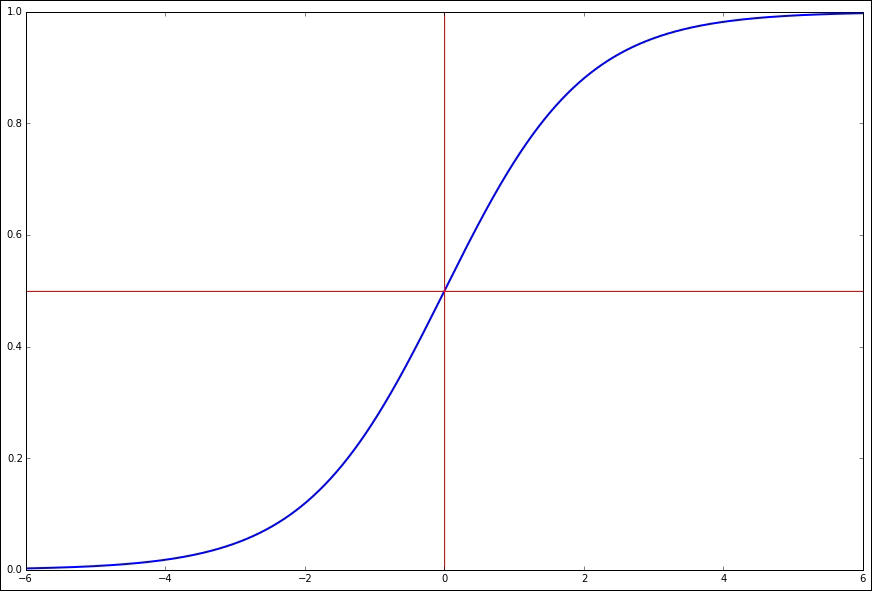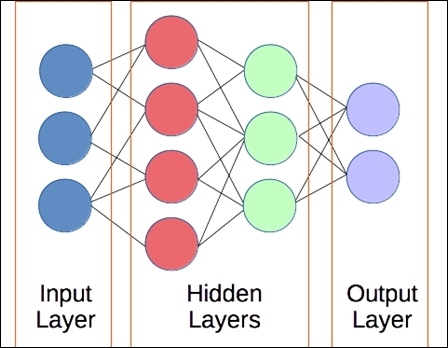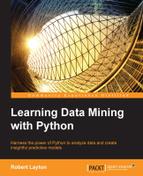Interpreting information contained in images has long been a difficult problem in data mining, but it is one that is really starting to be addressed. The latest research is providing algorithms to detect and understand images to the point where automated commercial surveillance systems are now being used—in real-world scenarios—by major vendors. These systems are capable of understanding and recognizing objects and people in video footage.
It is difficult to extract information from images. There is lots of raw data in an image, and the standard method for encoding images—pixels—isn't that informative by itself. Images—particularly photos—can be blurry, too close to the targets, too dark, too light, scaled, cropped, skewed, or any other of a variety of problems that cause havoc for a computer system trying to extract useful information.
In this chapter, we look at extracting text from images by using neural networks for predicting each letter. The problem we are trying to solve is to automatically understand CAPTCHA messages. CAPTCHAs are images designed to be easy for humans to solve and hard for a computer to solve, as per the acronym: Completely Automated Public Turing test to tell Computers and Humans Apart. Many websites use them for registration and commenting systems to stop automated programs flooding their site with fake accounts and spam comments.
The topics covered in this chapter include:
- Neural networks
- Creating our own dataset of CAPTCHAs and letters
- The scikit-image library for working with image data
- The PyBrain library for neural networks
- Extracting basic features from images
- Using neural networks for larger-scale classification tasks
- Improving performance using postprocessing
Neural networks are a class of algorithm that was originally designed based on the way that human brains work. However, modern advances are generally based on mathematics rather than biological insights. A neural network is a collection of neurons that are connected together. Each neuron is a simple function of its inputs, which generates an output:

The functions that define a neuron's processing can be any standard function, such as a linear combination of the inputs, and are called the activation function. For the commonly used learning algorithms to work, we need the activation function to be derivable and smooth. A frequently used activation function is the logistic function, which is defined by the following equation (k is often simply 1, x is the inputs into the neuron, and L is normally 1, that is, the maximum value of the function):
The value of this graph, from -6 to +6, is shown as follows:

The red lines indicate that the value is 0.5 when x is zero.
Each individual neuron receives its inputs and then computes the output based on these values. Neural networks are simply networks of these neurons connected together, and they can be very powerful for data mining applications. The combinations of these neurons, how they fit together, and how they combine to learn a model are one of the most powerful concepts in machine learning.
For data mining applications, the arrangement of neurons is usually in layers. The first layer, the input layer, takes the inputs from the dataset. The outputs of each of these neurons are computed and then passed along to the neurons in the next layer. This is called a feed-forward neural network. We will refer to these simply as neural networks for this chapter. There are other types of neural networks too that are used for different applications. We will see another type of network in Chapter 11, Classifying Objects in Images Using Deep Learning.
The outputs of one layer become the inputs of the next layer, continuing until we reach the final layer: the, output layer. These outputs represent the predictions of the neural network as the classification. Any layer of neurons between the input layer and the output layer is referred to as a hidden layer, as they learn a representation of the data not intuitively interpretable by humans. Most neural networks have at least three layers, although most modern applications use networks with many more layers than that.

Typically, we consider fully connected layers. The outputs of each neuron in a layer go to all neurons in the next layer. While we do define a fully connected network, many of the weights will be set to zero during the training process, effectively removing these links. Fully connected neural networks are also simpler and more efficient to program than other connection patterns.
As the function of the neurons is normally the logistic function, and the neurons are fully connected to the next layer, the parameters for building and training a neural network must be other factors. The first factor for neural networks is in the building phase: the size of the neural network. This includes how many layers the neural network has and how many neurons it has in each hidden layer (the size of the input and output layers is usually dictated by the dataset).
The second parameter for neural networks is determined in the training phase: the weight of the connections between neurons. When one neuron connects to another, this connection has an associated weight that is multiplied by the signal (the output of the first neuron). If the connection has a weight of 0.8, the neuron is activated, and it outputs a value of 1, the resulting input to the next neuron is 0.8. If the first neuron is not activated and has a value of 0, this stays at 0.
The combination of an appropriately sized network and well-trained weights determines how accurate the neural network can be when making classifications. The word "appropriately" also doesn't necessarily mean bigger, as neural networks that are too large can take a long time to train and can more easily overfit the training data.
We now have a classifier that has initial parameters to set (the size of the network) and parameters to train from the dataset. The classifier can then be used to predict the target of a data sample based on the inputs, much like the classification algorithms we have used in previous chapters. But first, we need a dataset to train and test with.
